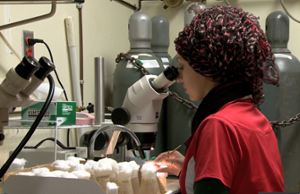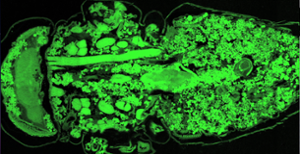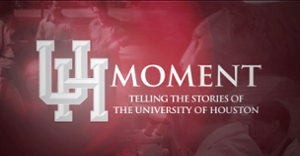Highlighting Work in The Biology of Behavior Institute
Gregg Roman, an associate professor of biology and biochemistry at the University of Houston, Shixing Zhang, a postdoctoral associate, and a research team from the university’s Biology of Behavior Institute are working to better understand how memories form.
“We’re really trying to get into how these memories form at the level of neurons and the molecular pathways that are involved,” explained Roman.
 They hope to help unlock better ways to treat dementia and improve memory in people.
They hope to help unlock better ways to treat dementia and improve memory in people.
“One of the hallmarks of dementia is memory dysfunction. If we understand more about how memories form, we can have better interventions into dementia – especially at the early and mid stages,” said Roman.
Roman and his colleagues are looking at brain activity in fruit flies.
“As flies get older, just like people, their memories do not form as easily,” said Roman.
Using powerful confocal microscopes, the team is focusing in on neurons in the flies’ brains.
 “We are actually identifying the specific process individual neurons have in memory
formation and what signaling pathways are operating in those neurons,” said Roman.
“A confocal microscope is a laser-based system in which we can actually take optical
planes and image changes in florescence within the living animal. Not only can we
look at a live specimen, but we can measure changes in the florescence activity within
a very thin layer of those brains.”
“We are actually identifying the specific process individual neurons have in memory
formation and what signaling pathways are operating in those neurons,” said Roman.
“A confocal microscope is a laser-based system in which we can actually take optical
planes and image changes in florescence within the living animal. Not only can we
look at a live specimen, but we can measure changes in the florescence activity within
a very thin layer of those brains.”
They watch closely, first as the flies are trained to respond to a certain odor, and then as they eventually avoid that odor.
“A very important feature of forming an associative memory is attention. One has to realize which stimuli you need to pay attention to in order for you to learn,” said Roman. “We’ve identified groups of neurons which seem to serve this attentional process. They tell the fly, ‘Okay, here is an odor you should be paying attention to, and here is an odor that you can ignore.’”
 Roman is part of a community of researchers, including teams in Cambridge, Germany
and Paris, all working in this same concentrated area. They are each taking different
approaches, and Roman admits there is competition. However, he said that as a research
community they have been able to make huge strides in understanding the learning process.
Roman is part of a community of researchers, including teams in Cambridge, Germany
and Paris, all working in this same concentrated area. They are each taking different
approaches, and Roman admits there is competition. However, he said that as a research
community they have been able to make huge strides in understanding the learning process.
“We’ve been working specifically on the function of the gamma lobes for about five years,” explained Roman. “One of the things that we’ve done is move from the idea of a group of neurons that are involved in memory to actually identifying the specific process individual neurons have in memory formation, and what signaling pathways are operating in those neurons. Another five years and we’ll have a really dramatic increase in our understanding of memory formation.”